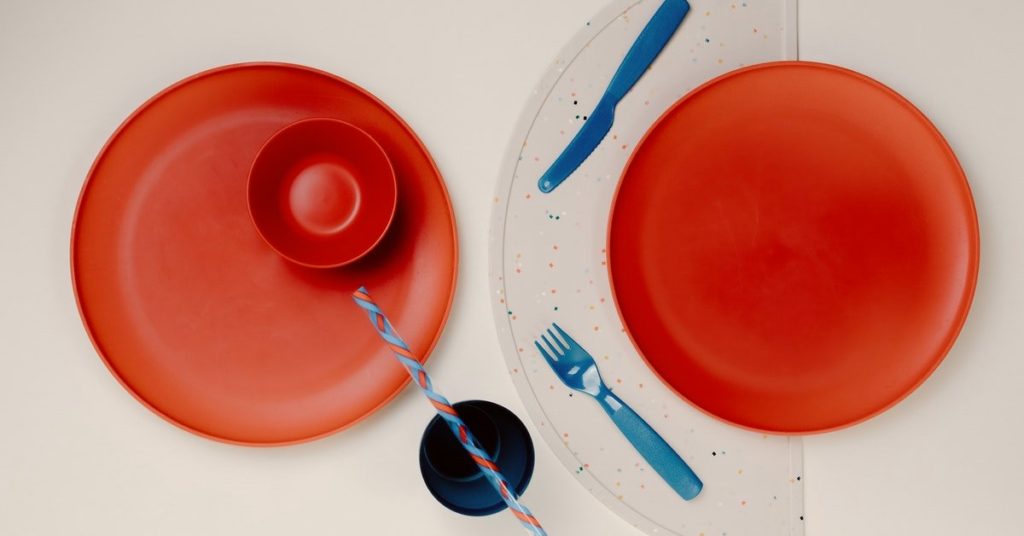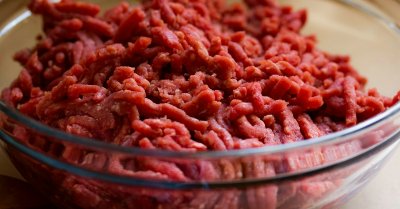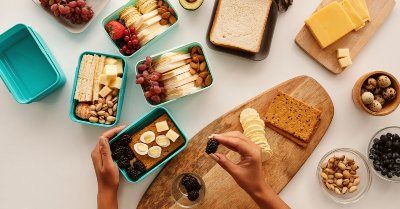Food Hygiene in Nurseries

Estimated reading time: 8 minutes
Introduction
There is some variation in the food hygiene guidelines for different types of early years care providers. Childminders, for example, do not require a food hygiene rating like nurseries. However, the principles remain largely the same; the differences are contextual. It is vital to understand why looking after four children in your home is an entirely different challenge to working as part of a team to manage 20 children in a nursery. To help you navigate some of the challenges, we’ve prepared a comprehensive guide for food hygiene in nurseries.
In this article we will explore the 4 C’s of Food Hygiene (cross-contamination, cleaning, chilling and cooking), focused within the nursery environment.
Cross-Contamination
In our recent Food Hygiene for Childminders Guide, we explored how the sheer quantity of possible contaminants means that you must always be vigilant when it comes to cross-contamination. In any kitchen setting, unless you have stringent processes to prevent it, the transfer of bacteria from an infected area to a non-infected area can be both easy and commonplace.

Bacteria doesn’t only come from raw chicken and leafy green vegetables, however. Young children’s weakened immune systems mean that they are more prone to unforeseen vomiting, diarrhoea, incontinence and the unintentional spreading of germs. Furthermore, common kitchen pests like mice and silverfish can bring all varieties of bacteria into your food environment if you aren’t vigilant.
Chemical contaminants can be problematic, particularly if you’re looking after a large group of children and need to disinfect things often. If disinfectants, sanitisers and bleach get into food, they can be very dangerous. Physical contamination is also very dangerous for children, as their vulnerability to choking hazards means that a simple bottle cap can become a real problem.
Finally, allergenic contamination can be a real issue for young children, particularly those who perhaps are thus far unaware of any potential allergies. If you serve any of the 14 allergens, without having a full allergen record for each child in your care, you could have a surprise anaphylactic reaction on your hands.
Preventing Cross-Contamination in a Nursery Setting
So, now that we understand some of the forms of cross-contamination and their causes, let’s investigate how you can take action to prevent them within a nursery.
Compared to childminders, there are a number of benefits to working in a nursery. Regarding kitchen-based cross-contamination, nurseries often have a separate room for cooking and children’s dining. Whilst childminders may have to allow children into the kitchen to eat, you can make a nursery kitchen a ‘staff-only’ zone. Children are, therefore, less likely to encounter biological contaminants like raw meat and chemical contaminants such as bleach and disinfectant.

In addition, being part of a team is a great asset to any nursery worker. You can be safe in the knowledge that you can focus on an important task whilst another nursery practitioner supervises children. This ensures that you perform any tasks, such as chopping food and cleaning, thoroughly and safely. With that in mind, you can also organise a fair, team-oriented cleaning rota centred around a ‘Clean-as-You-Go’ policy.
One downside of the nursery setting, however, is that the more children and practitioners involved, the higher the chances of viruses getting passed around. Norovirus, for example, can be a foodborne illness. Therefore, it is vital that if any of your workers suffer from vomiting and/or diarrhoea, they should not come into work until 48 hours after they have become symptom-free. Similarly, you should encourage parents to keep ill children at home until they are better. The norovirus can be difficult for the average person and dangerous for young children.
Proper record-keeping is vital for good food hygiene in nurseries, too. If children do get unwell, knowing what meals they’ve been fed, their allergen records and which company supplied the food can be vital to traceability. Do everything in your power to keep children safe and keep good records of it.
To be safe, avoid serving the 14 allergens if you can. Children typically consume milk, eggs and cereal, of course, but there’s no need to serve them shellfish or peanuts. Keep food simple.
Cleaning
To help you avoid cross-contamination, institute a thorough cleaning regime in the workplace. Here are some standard, solid techniques to follow for proper nursery cleanliness:

- Handwashing – To ensure the safety of your staff and the children under their care, everyone should regularly wash your hands. Staff often do this anyway. Most adults have developed good personal hygiene habits, particularly those who work in childcare. However, a few well-placed reminder signs in staff areas do no harm. The real challenge is in getting children to wash their hands. Most nursery staff will take children to the bathroom and should encourage them to wash their own hands well and reinforce these good habits.
- Clean-as-You-Go – This is a popular policy for all food businesses which cater to the public. A ‘Clean-as-You-Go’ policy refers to a rotating cleaning schedule, including both ‘daily’ cleans and ‘immediate’ cleans, such as spills and accidents. As part of a team, clearly write a rota so that everyone knows exactly their cleaning role on a certain day. It helps to prevent miscommunication and misunderstanding when the staff have to direct most of their attention towards children.
- Define zones – Outline specific areas for cooking, playing and eating. Consequently, you should find that the risk of contamination is reduced. If there is raw meat in the kitchen but children aren’t allowed in, you immediately reduce the risk of direct contamination. Then, the responsibility falls on your staff to properly wash their hands and anything leaving the kitchen.
Chilling
One of the advantages that a nursery worker has over a domestic childminder is space. Again, if children aren’t allowed into a kitchen, it makes the situation a lot simpler. In light of that, you should easily be able to follow rules like these for your fridges and freezers:
- First in, First Out (FIFO) – If you consistently buy food to cook or prepare lunch for the children under your care, use the FIFO method. In essence, store the foods with new expiration dates at the back of the fridge and older foods at the front. This rotating stock system helps you to keep food in-date and safe.
- Use your shelves wisely – On the unlikely occasion that you have raw meats in your nursery fridge, store them on the lowest shelf. Contrarily, store ready-to-eat, pre-cooked food and packed lunches on higher shelves. This prevents meat juices from contaminating your nursery’s packed lunches.
- Keep control of cooling food – Cooked or reheated food is often too hot for a young child and can burn them. As a result, we normally tell children to blow on their food or leave it to cool. A better option is to allow food to cool in the kitchen for a few minutes after cooking. Ensure that children cannot access it and that it does not fall into the food temperature ‘danger zone’ from 5-63°C.
Cooking
Cooking for nursery children is made easier if they’re not allowed into the kitchen. However, there are still considerations to take regarding safe cooking for and around children. Here’s a some ideas to consider:
- ‘Cooking together’ – If you decide to bake cupcakes with the children, think about how you can do this safely. Bring equipment to children in a non-kitchen area. Ensure that staff can see every child clearly and stop them eating cake batter, which contains raw eggs. If you do cook together, set limits. Children shouldn’t be chopping, putting food in the oven, touching raw meats or encountering any other possible hazards. ‘Cooking together’ means allowing the children to stir cake batter and pour milk into bowls, for example.
- Cooking/Reheating Food – If parents send their child to nursery with a meal that needs to be reheated like soup, ensure it is cooked thoroughly like a regular meal. It is not enough to warm a pre-cooked meal. Similarly, if you make a large meal from scratch for the children, ensure the food is heated properly throughout.
- Check packed lunches – Often, parents are on their way to work when they drop a child off for nursery. Whilst it is rare, sometimes a parent may accidentally pack a known allergen in a lunchbox. This can affect their own child or another in the group. Before warming up or handing out lunches, ensure that they are safe for consumption.

Conclusion – Food Hygiene in Nurseries
The 4 C’s are a great source of information to build your good food hygiene routines in nurseries. These principles are very similar to those used by restaurants and other early years practitioners.
This article recounts just a few possible situations. Ultimately, you must take these principles and think about how you can use them in your environment.
What next?
You and your fellow staff should be fully trained in good food hygiene practices, as required by law. We provide a range of appropriate Level 2 Food Hygiene courses which you can complete online in just a couple of hours. Upon completion, you can print a verifiable, CPD-accredited and RoSPA-approved food hygiene certificate.
